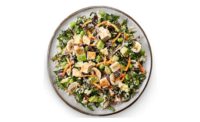Savory Ingredients Market
Industry researcher projects nearly $13.3 billion in global sales of savory ingredients by 2019.

The global market for savory, flavor-enhancing ingredients is projected to grow at a healthy CAGR of 5.7% between 2014-2019 and reach $13.295 billion by 2019. That’s the latest prediction from MarketsandMarkets , a global research firm. The Dallas firm just released, "Savory Ingredients Market by Ingredients (Yeast Extracts, HVP, HAP, MSG, Nucleotides and Others), by Application (Food Industry, Pet Food and Others) & by Geography -Global Trends & Forecasts to 2019.”
Officials say the report defines and segments the savory ingredients market with analyses and projections of the market size, in terms of value and volume. The market has been segmented on the basis of types and applications of savory ingredients. The report also identifies the driving and restraining factors of the global market with an analysis of trends, opportunities, winning imperatives, and challenges. The market is segmented and the market size is forecasted on the basis of key regions, including North America, Europe, Asia-Pacific (APAC), and Rest of the World (ROW). The key countries are covered with the market size and trends projected for each region.
Authors define savory ingredients are flavor enhancers that have the ability to modify flavors in food—without contributing to any separate flavor of their own. These ingredients play a significant role in enhancing the 'umami' flavor, which is the fifth flavor type.
The study asserts that yeast extracts are benefiting due to increasing demand of “more natural ingredients” and pressure to reduce the usage of monosodium glutamate. In general, yeast extracts have a good image and are the preferred choice for clean-label products. Yeast extract volumes have increased considerably in Europe in the period up to 2010. Most European producers are running at or near capacity. New investments have mainly been focused in Asia with the intention of importing into Europe.
Monosodium glutamate is projected to hold a majority of the market share in the savory ingredients market, as a cost-effective flavor enhancer. It is projected to grow at the highest CAGR of 6.1% during the forecasting period. However, it is slowly getting replaced by yeast extracts and other alternatives due to the health issues associated with the consumption of monosodium glutamate. The pressure to market “all-natural” products is putting its usage further under pressure. Use of MSG in snack foods remains widespread and is unlikely to change in the period up to 2016. Snack foods have a rather unhealthy image and the use of MSG and nucleotides here is not a major consumer issue, especially in countries where the consumer awareness regarding savory ingredients is low.
Looking for a reprint of this article?
From high-res PDFs to custom plaques, order your copy today!





